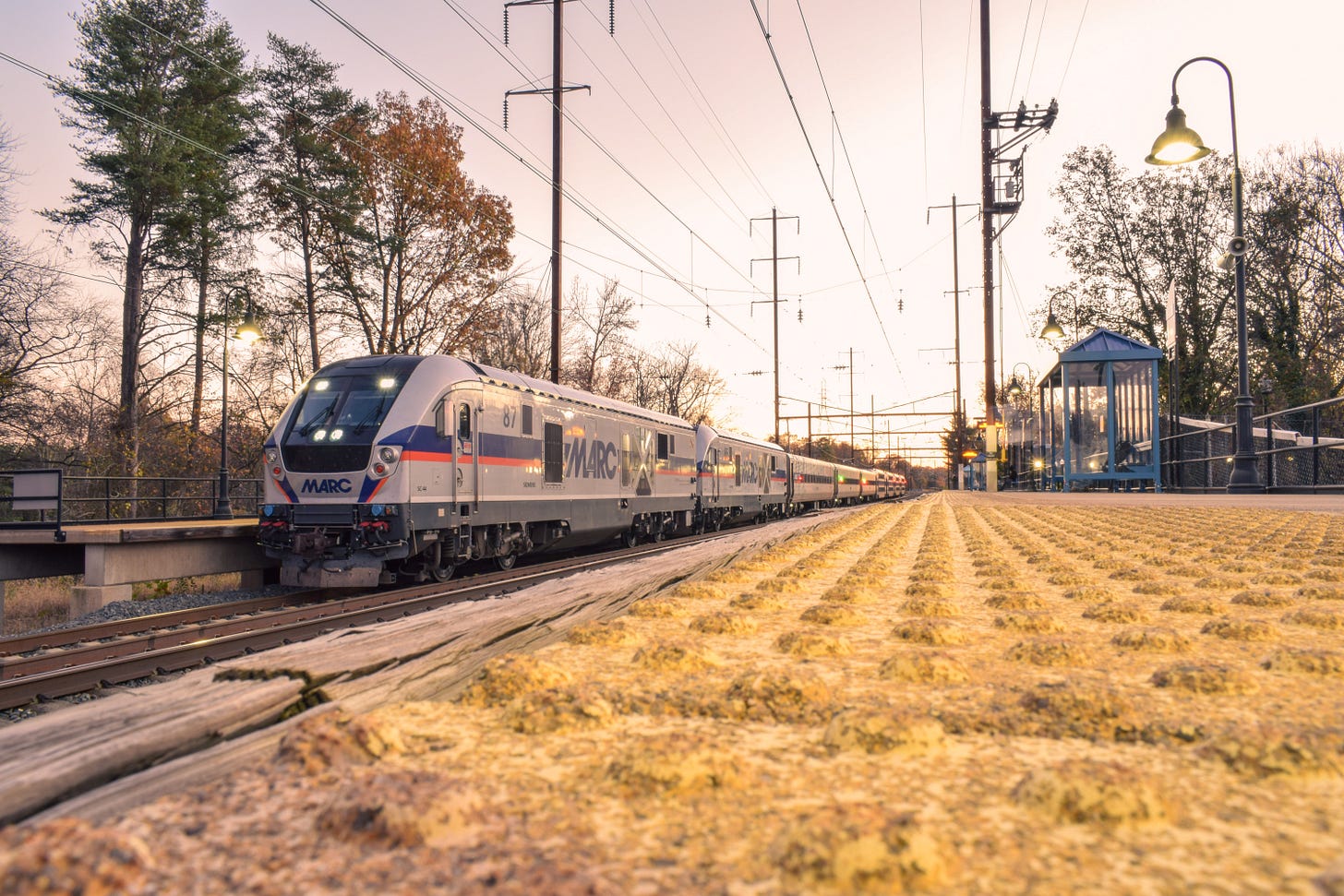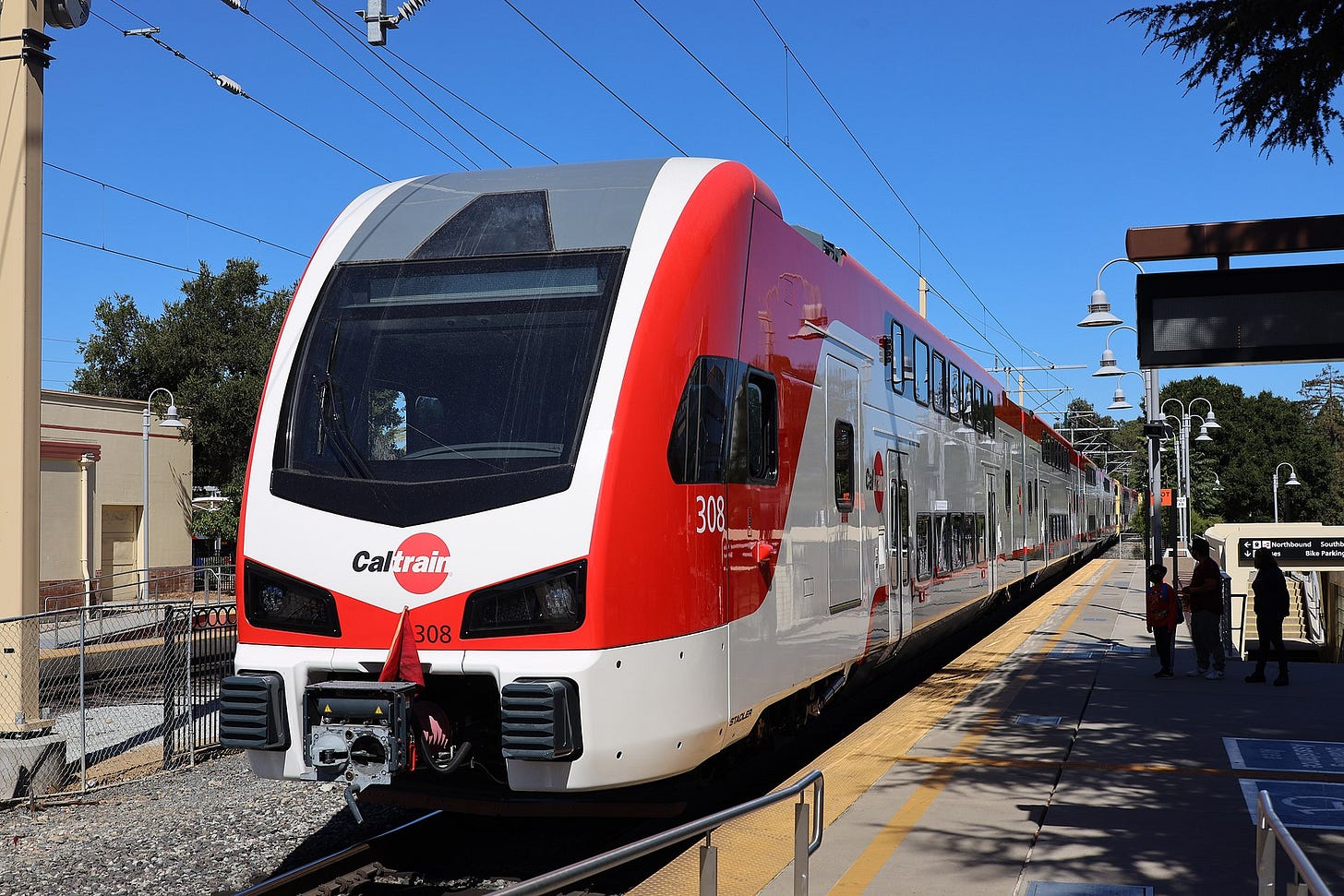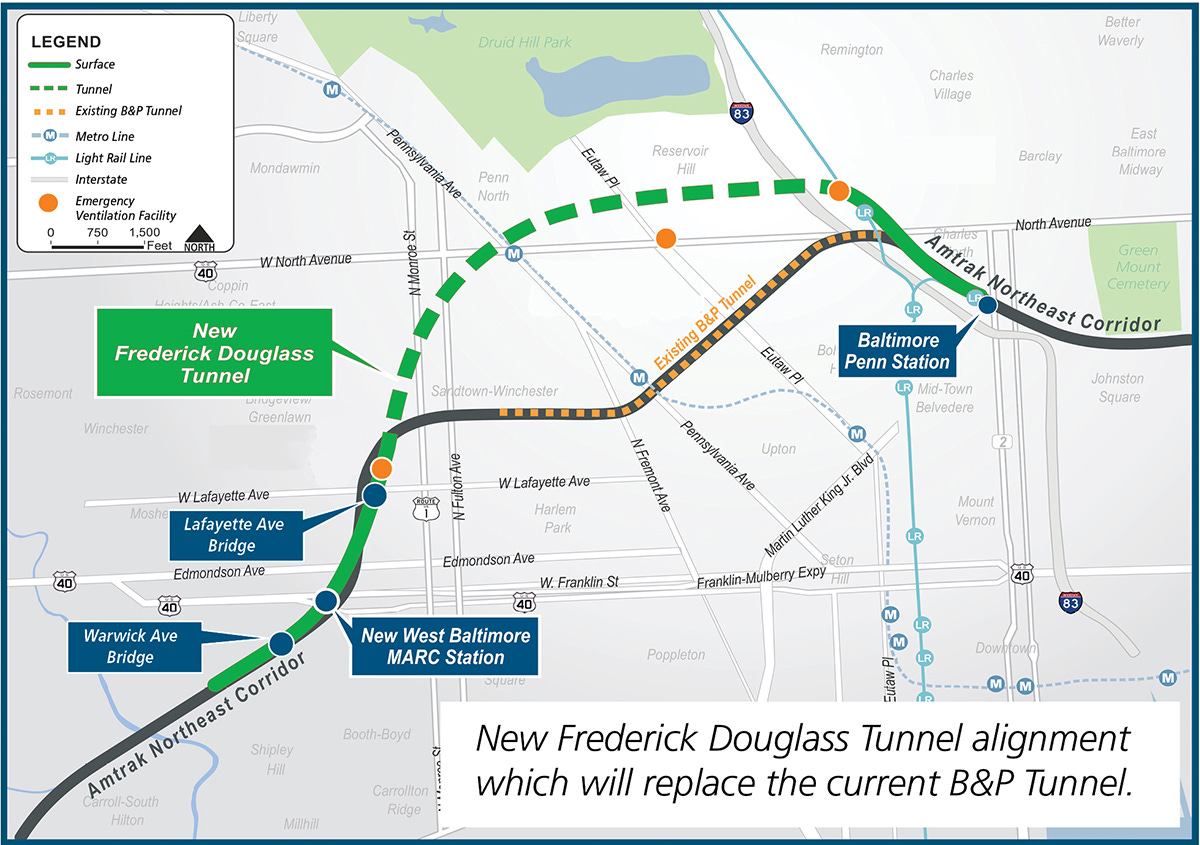Modernizing Maryland's Rail Network: The Penn Line
Transitioning from commuter rail to modern electrified regional rail
The MARC Penn Line is MARC’s busiest line, running along Amtrak’s Northeast Corridor between Washington Union Station and Baltimore Penn Station, with a handful of trips continuing north of Baltimore to Perryville. MARC as a whole carried nearly 30000 people per day prior to the pandemic, with the Penn Line accounting for about 2/3 of total ridership. Since the pandemic, ridership is down substantially. This is particularly exacerbated by the federal workforce continuing to work from home at rates higher than average. The system now carries an average of only around 12000 people per day according to data from APTA. The old model of commuter rail is no longer compatible with the transit landscape of 2023, and the system is primed for a transformation from a legacy commuter-oriented service to a modern regional rail network.
Rolling Stock
The Penn Line currently uses primarily diesel push-pull trains, along with a handful of electric locomotives. The diesel trains are capable of 90mph operations, while the electrics are capable of 125mph operation. Over the next decade, the oldest members of the locomotive and passenger car fleet will be reaching retirement age, and the MPI MPXpress locomotive fleet, the bulk of MARC’s diesel fleet, will be due for midlife rebuilds. This presents an opportunity for MARC to make the switch from primarily diesel push-pull trains to electric trains, which will be necessitated by the Frederick Douglass Tunnel project, as diesel ventilation will not be present. Electric multiple units (EMUs), self-propelled passenger railcars with higher performance than diesel locomotives, are the obvious choice. EMUs would be capable of shaving time off the trip, as they accelerate and decelerate faster than diesel trains while performing station stops, and could be designed around a 125mph operational top speed. Boston’s MBTA Commuter Rail is planning on electrifying in the coming years, and Philadelphia’s SEPTA is due for a fleet replacement of their 1970s Silverliner IV EMUs. The three agencies could jointly order new EMUs, which would reduce procurement costs. Dual-mode locomotives which run on both diesel and electric power could also be procured, enabling service to run through into Virginia or other non-electrified areas.
Service Expansion
MARC is planning on expanding service on the Penn Line into Northern Virginia and to Newark Delaware, in order to effectively transition towards the regional rail model and improve service, schedule changes will be necessary. Currently the schedules are fairly inconsistent, with peak weekday headways of 15 minutes, and off peak trains roughly every hour. Peak trains have inconsistent stopping patterns, which are confusing for riders and increase operational complexity.
What could these schedule changes look like? The 2022 Maryland State Rail Plan proposes 3 service patterns, an all local train between Baltimore and Washington, an express pattern stopping at Washington Union, New Carrollton, Odenton, and BWI Airport, and Baltimore Penn, and an express-local Perryville service which is express south of Baltimore and local to Perryville. After infrastructure in Virginia is upgraded, some of these trains could through-run into Northern Virginia, stopping at major job centers at L’Enfant Plaza in DC, Crystal City, and Alexandria, providing a one-seat ride from Maryland into Virginia.
MARC is also planning for an expansion of service to Newark DE in order to provide a transfer to Philadelphia’s SEPTA Regional Rail, contingent on DelDOT’s completion of new station facilities in Newark. The proposed Perryville express-local trains could be extended two stops from the terminus at Perryville to Newark, with one new station in Elkton MD.
Ideally, trains should be running every 15 minutes all day on a consistent, clockfaced schedule. 15 minute all day service is not a novel idea, many countries in Europe run frequent suburban and regional trains, such as Paris’s Transilien and London’s Elizabeth Line. In the US, the Bay Area’s Caltrain is currently undergoing a conversion from a traditional push-pull commuter railroad to an electrified regional rail network, with train frequencies planned to be every 10 minutes between San Francisco and San Jose during peak times. New service patterns should emulate these services, which provide a high quality, frequent link between suburban areas and urban cores.
Infrastructure
In order to run these proposed services, infrastructure upgrades will be necessary, particularly south of Baltimore Penn. The Northeast Corridor between Baltimore and Washington is currently a primarily triple-tracked corridor with a number of bottlenecks, the largest being the Baltimore and Potomac Tunnel, a double-tracked rail tunnel between West Baltimore and Baltimore Penn Station. Built in 1873, the tunnel’s sharp curves slow trains from 125mph down to just 30mph. The new Frederick Douglass Tunnel project seeks to replace the 150 year old tunnel with a pair of 110mph tunnels, as well as replacement of the existing West Baltimore MARC station with a new fully ADA compliant station. This project is slated to begin construction soon, with completion around the early 2030s, and it will enable MARC express trains to travel between Baltimore and Washington in under 30 minutes.
The current configuration of triple track between New Carrollton and Halethorpe presents a fairly significant operational challenge for frequent MARC service, particularly during rush hour due to conflicts with Amtrak. A fourth track between these stations is a necessity to ensure high frequency, conflict free operation. This will also necessitate the rebuilding of several stations, the most prominent of which being the BWI Airport rail station, which MDOT has proposed rebuilding with a center island platform and two side platforms. This project also includes 9 miles of track between Odenton and Halethorpe, but an additional ~15 miles of track will also be necessary between New Carrollton and Odenton.
North of Baltimore, Amtrak is planning to replace the bridges over the Bush, Gunpowder, and Susquehanna rivers with quad-tracked replacements capable of higher speeds. MDOT has proposed quad-tracking the corridor and rebuilding the stations north of Baltimore with high-level platforms in the State Rail Plan.
Conclusion
Transforming MARC’s existing operations into a modern, frequent regional rail system will bring Baltimore, Washington DC, and surrounding regions closer together. It is a key component to reducing the region’s dependence on cars, and it will benefit not only MARC but also the Northeast Corridor as a whole, allowing for faster, more frequent intercity service on America’s busiest rail corridor.
(Thanks to @floppatakes for the Penn Line photos)







